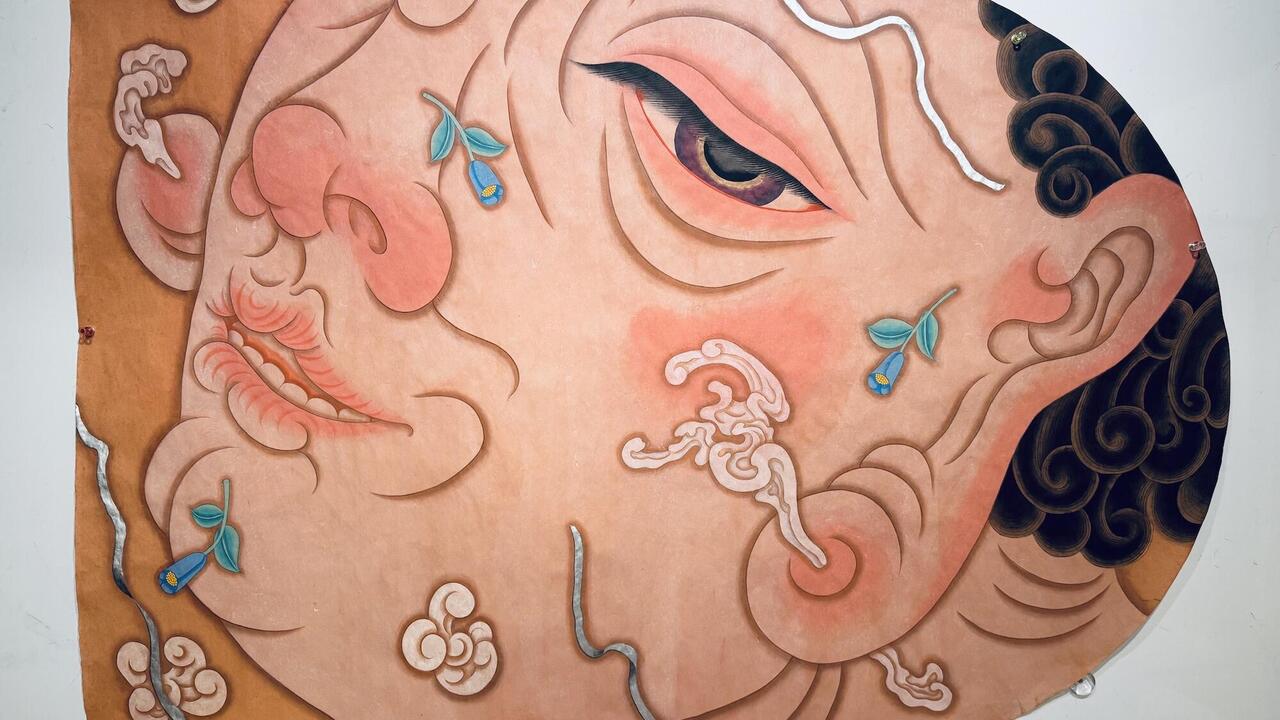Wade Guyton, Seth Price, Josh Smith, Kelley Walker

In this group show, featuring four New York artists and cunningly laid out by them in collaboration with curator Beatrix Ruf, every imaginable variation of appropriation took place until the concept of authorship was overtaxed to the point of exhaustion. The works on display – paintings, sculptures, videos and installations, comprising more than 50 pieces in all – used images that came from anywhere and everywhere, with more than a nod to Andy Warhol and Robert Rauschenberg. Their contents were raided from advertising, press photography, corporate logo design and typography: conventional sources whose exploitation was rendered tongue-in-cheek by the fact that the materials belonged almost exclusively to the late 1970s and early ’80s – that is, exactly the era when appropriation itself became a cliché.
In the opening room Kelley Walker filched a bunch of photos featuring Warhol and Salvador Dalí lounging in the five-star cabin of a jet. Walker reproduced them as CMYK prints on canvas, making the colours even more acidulous by skewing the separations. The pairings, too, seemed askew: athletes, artists, TV celebrities. Their faces were familiar, but the constellation was perplexing. What were they all doing there? It’s a mark of just how well this exhibition was conceived that the questions raised by a show laden with citations and references were answered by the time I reached the final room.
Seth Price took an image of the deer hunt from the caves of Lascaux, officially the oldest existing piece of European art, pixelated it in putrid monochrome green and printed it onto clear plastic (Animals, Arrows, 2006). Of course, the joke here is that in order to protect the original paintings the French built a replica of the original caves for tourists. As Jean Baudrillard observed in Simulation and Simulacra (1981): ‘It is possible that the memory of the original grottoes is itself stamped in the minds of future generations, but from now on there is no longer any difference: the duplication suffices to render both artificial.’ In contrast to the sterile simulated dystopia that Baudrillard threatened and which Jeff Koons celebrated, these artists have their revenge on the high-gloss finish that we associate with New York Neo-pops.
These objects were literally manipulated; they were imperfect and dirty, with traces of the artists’ hands all over them, as if by touching and retouching them they could reclaim these images. It’s a sort of authorship by abuse, exemplified by Wade Guyton torturing inkjet printers by folding and force-feeding canvas through them. Josh Smith turned his signature into the sole content of his painting in his series Untitled (2006), the letters arranged geometrically to fill the entire frame. Repeated again and again in what seemed like a state of narcissistic depression, his name ended up merely a sequence of empty glyphs.
In contrast to the conventions of Pop, these artists’ images weren’t selected for their status as icons that can be parodied or desecrated. Rather, they were stripped of their connotations and given new, weaker ones. There was a profound sense of arbitrariness about the selection, even in the case of those images that would normally resound with political meaning. When Walker went back to the same press photo archive that Warhol mined for his Race Riots screen prints (1963–4) and found other photos which he screen-printed as Black Star Press (2006), he put some images back into circulation, but any incisive commentary on political progress (or lack thereof) was blocked when he irreverently covered them in trails of chocolate like a celebrity cooking show with Sigmar Polke. This arbitrariness would have been alienating had it not been for the way the objects were handled into submission. Instead, it came across as a sort of freedom – the capriciousness of choice, of being able to fish things out of the media stream and make them our own.
And the celebrities in the opening room? A digitized screen print by Walker in the last room provided the key: they’d been taken from the notorious 1970s’ advertisements for the now defunct Braniff Airlines: Andy Warhol and Sonny Liston Fly on Braniff (When you got it – flaunt it.) (2005). And maybe the fact that Braniff Airlines was bankrupted over 20 years ago is not incidental to this exhibition but a sort of coda. The promise from Lascaux was that, when all the corporate megafauna that over-saturate our world have died and decomposed, we’ll be raiding their burial grounds for pictures to decorate our caves.















